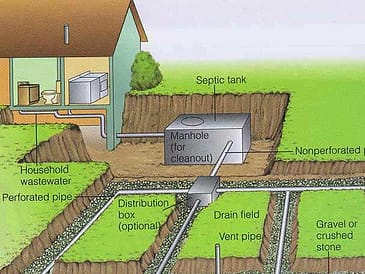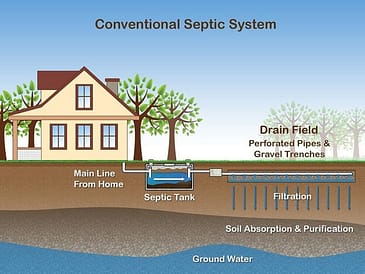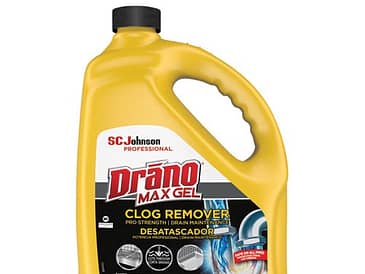Septic Tank Lid Replacement Near Me: What You Need to Know
A damaged or outdated septic tank lid isn’t just an inconvenience—it can be a serious hazard.
Whether made of metal, concrete, or plastic, your septic lid plays a critical role in sealing your system, preventing odors, keeping contaminants out, and protecting children and pets from accidental exposure.
If your lid is cracked, rusted, or unstable, it’s time to replace it. Here’s what to know about costs, materials, installation, and maintenance.
Why Septic Tank Lid Replacement Matters
Septic tank lids aren’t just functional—they’re a matter of safety. A cracked or missing lid can expose you to:
- Unpleasant sewage odors
- Risk of falls or injuries from an open tank
- Debris or stormwater contamination of the system
- Accelerated system damage from external exposure
“Replacing a septic lid on time can prevent thousands in repair costs and protect your family from unnecessary risk.” — Angela Harmon, Certified Septic Technician.
Cost of Septic Tank Lid Replacement
The cost to replace a septic tank lid varies depending on size, material, and labor needs. Here’s a quick breakdown:
- Plastic lid: $30–$70
- Concrete lid: $100–$300 (plus labor)
- Riser and lid combo: $150–$500
- Professional installation: $200–$1,000 depending on access and equipment
Prices may increase if permits or excavation are required. Always get multiple quotes before hiring a septic service provider near you.
 Best Materials for Septic Tank Lids
Best Materials for Septic Tank Lids
Choosing the right material ensures durability, ease of maintenance, and protection against the elements.
Concrete Lids
- Very durable and secure
- Lasts 30+ years
- Heavy—requires lifting help or machinery
Plastic/Polyethylene Lids
- Lightweight and easy to remove
- Resistant to corrosion
- Requires proper sealing to prevent leaks
Fiberglass Lids
- Strong, light, and corrosion-resistant
- Ideal for high water table zones
- Higher upfront cost but long-term value
“Plastic lids are popular for easy handling, but concrete lids still win for durability in harsh climates.” — Jason Phelps, Licensed Installer.
Installing a New Septic Lid or Riser
Installing a new lid can be a DIY project with the right tools, but professional installation ensures proper sealing and safety compliance.
Steps:
- Locate your septic tank with plans or probing
- Mark utility lines and clear soil above the tank
- Remove old lid carefully (use pry bars or lifting equipment)
- Measure and clean the tank opening
- Fit and secure the new lid or riser system
Pro Tip:
Install a riser with your new lid to make future pump-outs and inspections easier—no more digging!
“Risers with secure lids save time, lower long-term costs, and make your system safer and easier to access.” — Meredith Long, Septic System Maintenance Advisor
Ongoing Maintenance for Your Lid
- Inspect annually for cracks, leaks, or shifting
- Ensure lids are tightly secured to prevent accidents
- Clean and reseal plastic lids as needed to maintain airtightness
- Check the surrounding ground for sinking or pooling water
Use weather-resistant sealants and keep access clear for technicians.
Signs Your Septic Lid Needs Replacement
- Visible cracks or rust
- Foul odors escaping near the tank area
- The lid feels loose or unstable
- Difficulty lifting during inspections
- Water infiltration during rainstorms
 Hiring a Local Septic Professional
Hiring a Local Septic Professional
When searching for “septic tank lid replacement near me,” be sure to:
- Read verified reviews
- Confirm licensing and insurance
- Request quotes from 2–3 companies
- Ask about lid compatibility, safety features, and material warranties
“Working with a certified contractor ensures proper sealing and lid installation that meets local code.” — Tony Delgado, Septic Contractor.
Conclusion: Protect Your System from the Top Down
A secure, high-quality septic lid is essential for protecting your system, your family, and your property. Whether you opt for concrete, plastic, or fiberglass, make sure your replacement lid is properly sized, securely installed, and easy to access. For affordable septic tank lid replacement near you, contact Septic Service Center—we’ll help you safeguard your system from the surface down.

 Best Materials for Septic Tank Lids
Best Materials for Septic Tank Lids Hiring a Local Septic Professional
Hiring a Local Septic Professional



